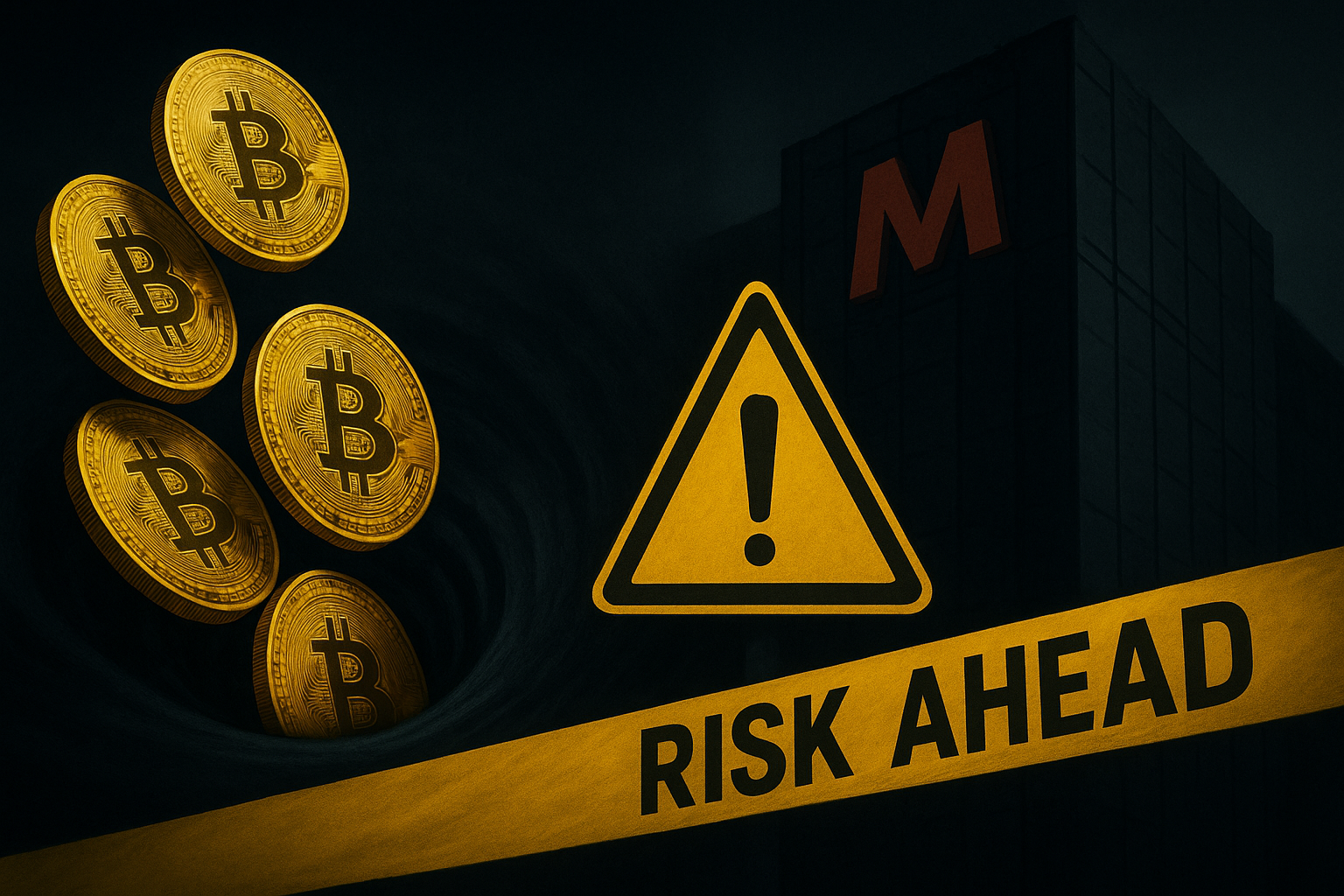Is MicroStrategy a Bitcoin Pyramid Scheme?
MicroStrategy Inc. (ticker MSTR), recently renamed Strategy, was founded in 1989 as a software company. Today, it presents itself as a “bitcoin treasury”—a company whose core business is essentially holding bitcoin. As of 2025, it is the largest corporate bitcoin holder in the world, owning more than 500,000 bitcoins with an estimated value of roughly $60B.
 Image generated using OpenAI’s DALL·E, June 2025.
Image generated using OpenAI’s DALL·E, June 2025.
The company is growing at a mind-bending rate—its stock has surged by more than 2,000% since 2022, outperforming nearly every major U.S. stock, including Nvidia. How is this happening?
The company’s current business model can be described by a positive feedback loop process:
- Borrow money, primarily by issuing new stock.
- Use the proceeds to buy bitcoin.
- This increases both the company’s bitcoin holdings and (in theory) bitcoin’s price, thereby boosting the company’s market capitalization—which can then be used to raise more capital and repeat the cycle.
This feedback loop has been nicknamed the “infinite money glitch”. But let’s be clear: it’s not sustainable. Here’s why.
A Simple Example
Let’s walk through an illustrative case, as in examples shown here and here:
Suppose a company owns 10 units of a fictional cryptocurrency called B Coin. Each B Coin is worth $1. The company has 1,000 shares outstanding, priced at $0.50 each. This means each share entitles its holder to:
\[\frac{10}{1000} = 1\% \text{ of a B Coin}\]| Assets | Shares Outstanding | Value per Share (B Coin) |
|---|---|---|
| 10 B Coins | 1,000 | 1% |
Now imagine the company raises $10 by issuing 20 new shares at the current price of $0.50. It uses that $10 to buy 10 more B Coins. The new situation:
| Assets | Shares Outstanding | Value per Share (B Coin) |
|---|---|---|
| 20 B Coins | 1,020 | ~1.96% |
Suddenly, the assets per share have nearly doubled—from 1% to ~1.96% of a B Coin. That’s a 96% increase. Where did this extra value come from?
It came from the new investors.
Initially, a share costing $0.50 corresponds to 50% of a B coin. However, instead of buying the B coin itself, the latecomers, by buying the company’s share, end up with only 1.96% of a B coin instead. They drastically overpaid. This is actually the premium that investors pay in order to hold MSTR stock instead of holding bitcoin. Meanwhile, early shareholders benefited from the dilution and saw their asset-per-share value increase.
This process can continue as long as new buyers are willing to join in. But at some point, someone will be the last buyer, left holding overpriced shares when the music stops.
This mechanism bears resemblance to how pyramid schemes operate: earlier participants benefit from the contributions of newer ones.
A question remains:
What will happen when the price of bitcoin eventually crashes?
A significant drop in the value of bitcoin would likely lead to a decline in MicroStrategy’s stock price, compressing the premium at which the company trades relative to its bitcoin holdings. This could slow—or even reverse—the “flywheel” feedback loop described above, potentially triggering a vicious cycle that may lead the company to a spectacular crash. Bitcoin itself could also be affected by such a collapse.
Conclusion
Jumping on the MSTR wave might indeed seem tempting, especially considering the current hype around the company and its eye-catching returns. However, investing in a company should be backed by research and fundamentals. Potential investors are encouraged to think carefully before taking any action.
Disclaimer: The views expressed in this post are solely my own, based on publicly available information. They do not represent the views of any current or past employer. This content is not financial advice and does not make allegations of fraud or illegality.

Comments